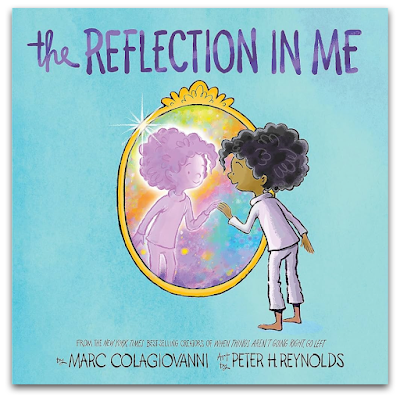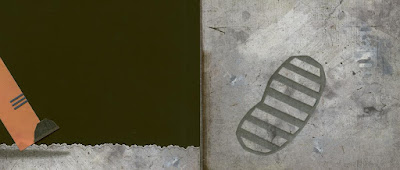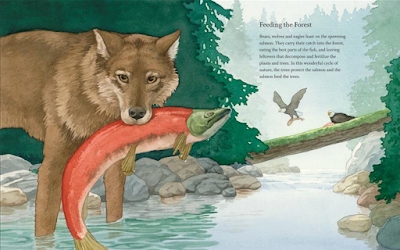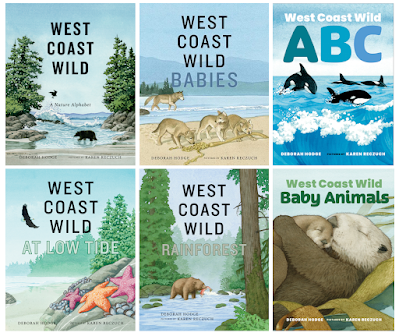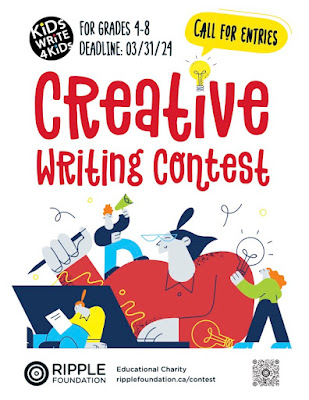Leon Levels Up
(Orca Currents)
Written by Paul Coccia
Orca Book Publishers
978-1-459837355
112 pp.
Ages 9-12
RL 2.3
February 2024
On Feburary 16, 2024, I reviewed Paul Coccia's latest novel, a hi-lo middle grade story titled Leon Levels Up. With the official launch coming soon, Paul Coccia graciously agreed to a Q & A with me about the book. This is that interview.
• • • • • • •
 |
Author Paul Coccia
|
Helen Kubiw: Leon Levels Up is definitely a story embedded in gaming. Why choose this is as a vehicle for your plot?
Paul Coccia: There were the inspirations of my nephew and friend to whom I dedicated the book. My friend got a rather expensive virtual reality gaming system during the pandemic (when the book idea was conceived) and I realized that during isolation, the online world and gaming allowed a lot of people to connect virtually when we couldn’t in-person. My nephew loves video games and it seemed like a story premise that would appeal to kids.
This next reason will sound writerly in some ways, but I was thinking about the child main character and their agency. When I thought of my chubby, non-athletic Leon who (like me) is not very good at sports, I also thought about where he would feel empowered. The virtual world provided the opportunity for Leon to feel strong and do things he’d never be able to do in the real world. Thinking about why a person would gravitate to video games gave me insight into Leon’s character and how he could be an action hero.
HK: You acknowledge help from others with the topic of gaming, but do you do any gaming or did you try gaming to understand it better?
Paul Coccia: I’m a very casual video game player and tend toward classic big-name franchises you’d likely find on the Nintendo systems. I’ve tried and found out that the first-person perspective a lot of games (and virtual reality) use is a sure way to have my character stuck in a corner. I can’t figure it out! Give me one of those dance competition video games though and I can get that choreography down quickly though.
I do enjoy playing video games though, especially with one of my brothers or my nephew. I find it relaxing and entertaining, but I can go long periods without missing playing them. I enjoy the interactions with them more than I do the actual games.
HK: Though Leon Levels Up is a piece of fiction, how real is the possibility of the tech that Leon and Nico play with at Pix Grid?
Paul Coccia: All the technology presented in the novel is already in existence. Nanobots, for example, have existed for years. I read they were being used for medical procedures and thought that was a cool use of modern technology.
I wanted the game to be entirely possible in terms of technology and where it is today. However, someone making a game that involves tanks of nanobots in a gel is unlikely. Besides safety, there are hygiene concerns for cleaning the tank. The big deterrent would be the cost of making it combined with very few people being able to afford it. No video game company would take this on because it would cost a fortune. Is it possible though? Absolutely!
HK: Do you think Nico only used Leon so that he could get Gabs to let him play Dragon Hunt? Or do you think he saw something beyond what Leon could do for him?
Paul Coccia: This question is very insightful. Nico is a character who thinks a lot of himself. When he invited Leon to play Dragon Hunt, Nico honestly felt the only person who had the skills worthy of playing with the great Nico was Leon. Nico wanted someone on his level of gaming. Leon was the only one who could possibly match or rival Nico’s skill in Nico’s eyes. This made Leon a worthy opponent/co-gamer. I don’t think readers would be surprised I think of Nico with this level of hubris.
HK: Too many people see themselves only in terms of others, as does Leon. So, it’s not surprising that someone like Leon sees himself as “low level” when he compares himself to someone like Nico. What would you say to teens who only see themselves in terms of others? And would this be the same thing you would tell your teen self now?
Paul Coccia: I think comparison is natural as is wanting and liking external validation, although it is not always fruitful. If all we look for is external validation, we will always be looking for an outside source for it. Internal validation, while it can be a difficult process, is a better investment for emotional energy. You can and should also consider if the person’s opinion you value is worth valuing and why.
For my younger self, I would advise the sooner I stopped focusing on what people who don’t matter in my life thought I should do, I’d free up a lot of time and energy. With those, I can not only do things fulfilling to me, but appreciate, admire, and celebrate others without the negative effects of comparison. I can only be the best me; I can’t be the best someone else.
HK: The hi-lo genre (high interest, low vocabulary) like that of the Orca Currents series is a popular one for older readers who may be challenged by reading. What are the challenges for you as an author to write a hi-lo novel?
Paul Coccia: I find the length of hi-los the most challenging aspect. I find it easiest naturally to work in longer novel form. Things like word choice, sentence length, or complexity of the plot can be challenges, but they’re also incredibly rewarding when you know you’re hitting the mark. I find certain elements that make successful hi-lo books (e.g. dialogue tags like “he said”) are used more and can sound a bit clunky when writing or reading, but they are important for the hi-lo reader. Using a dependent clause as a sentence is another that technically is incorrect writing, but a hi-lo writer needs to break the rules for their readers’ success.
HK: Leon Levels Up is a true coming-of-age story as Leon recognizes worth outside of materialism and popularity, becoming more grounded in realism as he immerses himself in the unreal. How hard is it to write a coming-of-age story in which a character must progress or develop in such a big way but in fewer pages than other novels?
Paul Coccia: I’m a character-driven writer. It’s all about the character with me so length affecting character arc wasn’t as bad as the action was. Because Leon is running for his life quite literally a big chunk of the book, it became harder to build in situations where the character could stop and reflect. He’s too busy reacting physically to stop and have complex emotions beyond fear. In editing, I went back through to find where those moments could exist and build them out to help the reader get into Leon’s mind and understand his inferiority.
One element of Leon that was very enjoyable to write was his age. Leon isn’t so young he is unaware of the world around him. He also isn’t too old to hide his vulnerabilities or emotions. Leon had a sweetness and sincerity to him I particularly liked writing.
HK: I know you have a picture book coming out, and have written middle grade, young adult, and a short story as part of an anthology. Which genre was the most satisfying to write and which was the most difficult to write?
Paul Coccia: One of the nice things about switching genres or audiences is getting to flex writing muscles I don’t always use like with articles or personal essays I’ve written for adults or the short story in Acorn Press’ The Annethology. Each project has helped me learn and deepen my respect for literature, particularly children’s literature.
I’ve gotten a lot of satisfaction from each stab at a genre but know that my comfort zone is young adult novels.
Picture books are a whole new challenge. They are hard! Writing them does not come easily to me. I have such admiration for picture book authors and illustrators who make it look easy. You need to be concise, choose few and just the right words, and still craft great stories and characters. They’re very rewarding, but less words do not equal less skill required. I think the opposite may be true.
• • • • • • •
Many thanks to Paul Coccia for being open to a Q & A, for taking the time to answer my questions, and for giving me a different perspective on a fabulous book which I had already enjoyed. Now I have more to think about, particularly, "I can only be the best me; I can’t be the best someone else." These are words to live by.
• • • • • • •
Great news: there's a book launch coming!
Join Paul Coccia
at
A Different Drummer Books
513 Locust Street
Burlington, Ontario
on
Saturday, April 6, 2024
1 PM (local time)
It's a great opportunity to pick up a signed copy of Leon Levels Up, meet Paul Coccia, and learn more about his book.
Hope to see you there!




